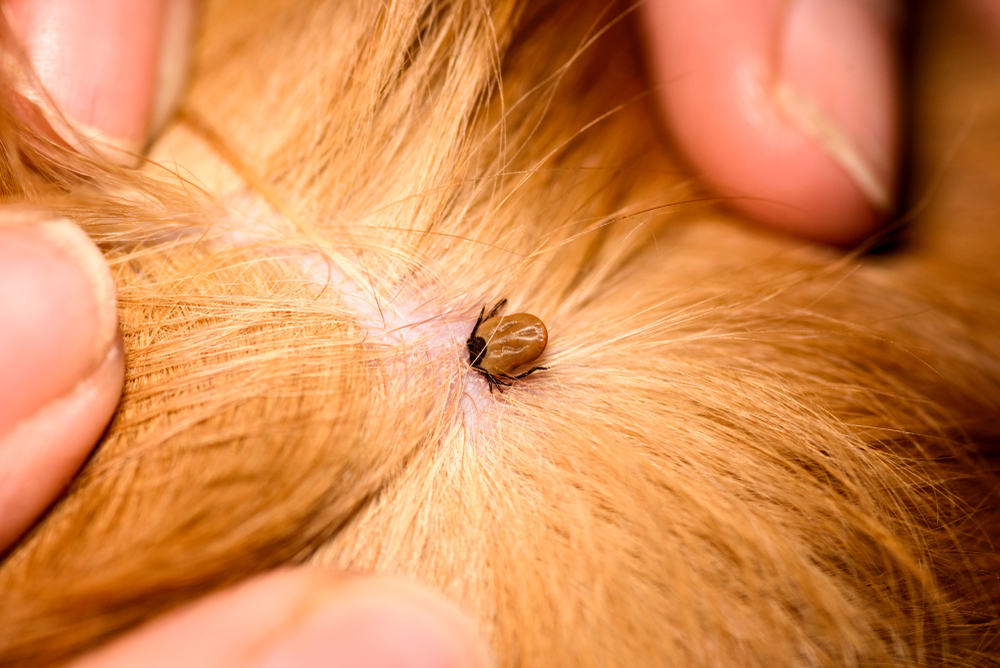Ticks and Fleas: How the Warm Weather Impacts Your Pets Likelihood

As temperatures rise and summer settles in, pet owners face an increasing threat that comes with the sunshine: ticks and fleas. These tiny parasites thrive in the warm months, turning outdoor adventures and backyard lounging into potential hazards for your furry companions. Understanding how ticks and fleas in warm weather affect your pets is critical for safeguarding their health and comfort. From knowing what to watch out for in the summer with fleas to understanding how ticks handle the warm weather, being prepared can help you effectively combat ticks and fleas in the summer.
The Lifecycle of Ticks and Fleas in Warm Weather
The lifecycle of ticks and fleas directly responds to temperature and humidity. Warm weather acts as a catalyst for both parasites, accelerating their development and increasing their populations. Fleas, for instance, reproduce rapidly once the temperature consistently rises above 65°F, a common threshold during summer months. A single flea can lay up to 50 eggs a day, quickly leading to infestations that can affect both pets and homes.
Ticks, on the other hand, become more active as temperatures climb, especially in areas with dense vegetation, tall grasses, or wooded environments. Unlike fleas, ticks do not jump but latch onto passing hosts from their perches on blades of grass or shrubs. Once attached, they feed on the host’s blood, sometimes for several days, increasing the risk of transmitting serious diseases like Lyme disease, Ehrlichiosis, or Rocky Mountain spotted fever.
Both pests benefit from the warmth, as it shortens their development cycles. Eggs hatch faster, larvae develop quicker, and adult parasites are more active and aggressive in seeking hosts. Warm, humid environments also extend the active season for ticks and fleas, which previously peaked in late summer but now often stretches from spring through early autumn.
What to Watch Out for in the Summer With Fleas
Knowing what to watch out for in the summer with fleas is essential to prevent infestations. Fleas tend to concentrate in shaded outdoor areas, where your pets might frequently rest. They can also linger in patios, pet bedding, carpets, and upholstery indoors. The first signs of flea problems are often excessive scratching, biting, or licking by your pets. Flea dirt—tiny black specks that look like ground pepper—is another common sign, typically found at the base of your pet’s fur.
Aside from physical discomfort, flea infestations can cause serious health issues. Fleas feed on blood, and severe infestations can lead to anemia, particularly in puppies and kittens. Fleas are also intermediate hosts for tapeworms, which your pet can ingest while grooming.
During summer, flea activity can spike suddenly. Routine checks, especially after your pets return from outside, help detect fleas early. Inspect areas like the neck, tail base, and inner thighs where fleas tend to gather. Keeping your home environment clean, vacuuming regularly, and washing pet bedding frequently are proactive ways to minimize risks. However, in high-risk seasons, even indoor-only pets can face exposure, carried in on humans or other animals.
How Ticks Handle the Warm Weather
Understanding how ticks handle the warm weather sheds light on why they become more prevalent and problematic in summer. Unlike fleas, which breed indoors and outdoors, ticks require a specific outdoor environment to thrive. Warmer temperatures trigger increased activity in ticks, prompting them to engage in questing behavior—a process where they climb onto vegetation and extend their front legs, waiting to latch onto passing hosts.
Ticks are highly resilient to both dry spells and high heat. Some species enter a dormant state when conditions become too harsh, conserving energy until conditions improve. However, summer often provides the perfect mix of warmth and moisture, stimulating their activity. Wooded areas, tall grass, and leaf litter remain favorite habitats where ticks find refuge from the direct sun while staying close to potential hosts.
Once attached, ticks can remain unnoticed for days, feeding steadily and potentially transmitting pathogens into your pet’s bloodstream. Unlike fleas, which are fast-moving and prolific breeders, ticks are stealthy, slow feeders. This makes it imperative to conduct thorough tick checks after hikes, walks, or any outdoor activity, particularly around your pet’s ears, neck, underbelly, and between the toes.
Ticks have become more widespread in recent years, partly due to climate change. Regions previously too cold for certain tick species now experience infestations, extending the geographic risk area for pet owners.
Practical Steps to Combat Ticks and Fleas in the Summer
To effectively combat ticks and fleas in the summer, a proactive, multi-faceted approach is necessary. Preventive medications—both topical treatments and oral options—remain the frontline defense. Many of these treatments are designed to repel and kill both ticks and fleas, breaking their life cycles before infestations take hold. Consulting your veterinarian to choose the appropriate solution for your pet’s size, age, and health status is essential.
Environmental control is equally important. Regular lawn maintenance, including mowing and clearing leaf litter, can reduce tick habitats. Creating physical barriers such as gravel borders around play areas and patios can discourage tick migration. For fleas, controlling indoor environments through frequent vacuuming, steam cleaning carpets, and using flea-specific sprays or treatments can minimize breeding grounds.
Tick and flea collars, spot-on treatments, shampoos, and sprays provide additional layers of defense. However, no single solution is foolproof. A combination of regular veterinary check-ups, consistent application of preventatives, and vigilant home maintenance can substantially lower your pet’s risk of infestation.
Additionally, limiting your pet’s exposure to high-risk environments during peak parasite activity can help. Avoid allowing pets to roam off-leash in heavily wooded or grassy areas, especially in the early morning and late afternoon when ticks are most active.
Protecting Your Pets Year-Round
Warm weather undeniably increases the risk of tick and flea infestations, posing health threats not only to pets but potentially to humans as well. By understanding how ticks and fleas in warm weather multiply and spread, recognizing what to watch out for in the summer with fleas, and learning how ticks handle the warm weather, pet owners can take informed steps to protect their animals.
Combating ticks and fleas in the summer requires constant vigilance. Regular parasite prevention, environmental management, and routine checks form the foundation of effective protection strategies. As summer stretches longer due to climate shifts, extending your preventative measures throughout the warmer months—even into early fall—becomes increasingly important.
Ultimately, early intervention is key. Acting before an infestation takes hold helps ensure your pets enjoy their summer adventures safely, without the itching, discomfort, or health complications that ticks and fleas can bring. By staying informed and proactive, pet owners can make the summer months a season of carefree enjoyment for their furry companions.
Need a Small Animal Hospital in Pauls Valley, OK?
At Williamsburg Small Animal Hospital, we are dedicated to ensuring the well-being of your pets, especially during the scorching summer months. If you have any concerns about keeping your furry friends safe and healthy in the heat, don’t hesitate to reach out to us. Our team of experienced veterinarians is here to provide you with personalized advice and top-notch care. Contact us today to schedule an appointment or to learn more about our services. Let’s work together to keep your pets safe and happy all summer long!
